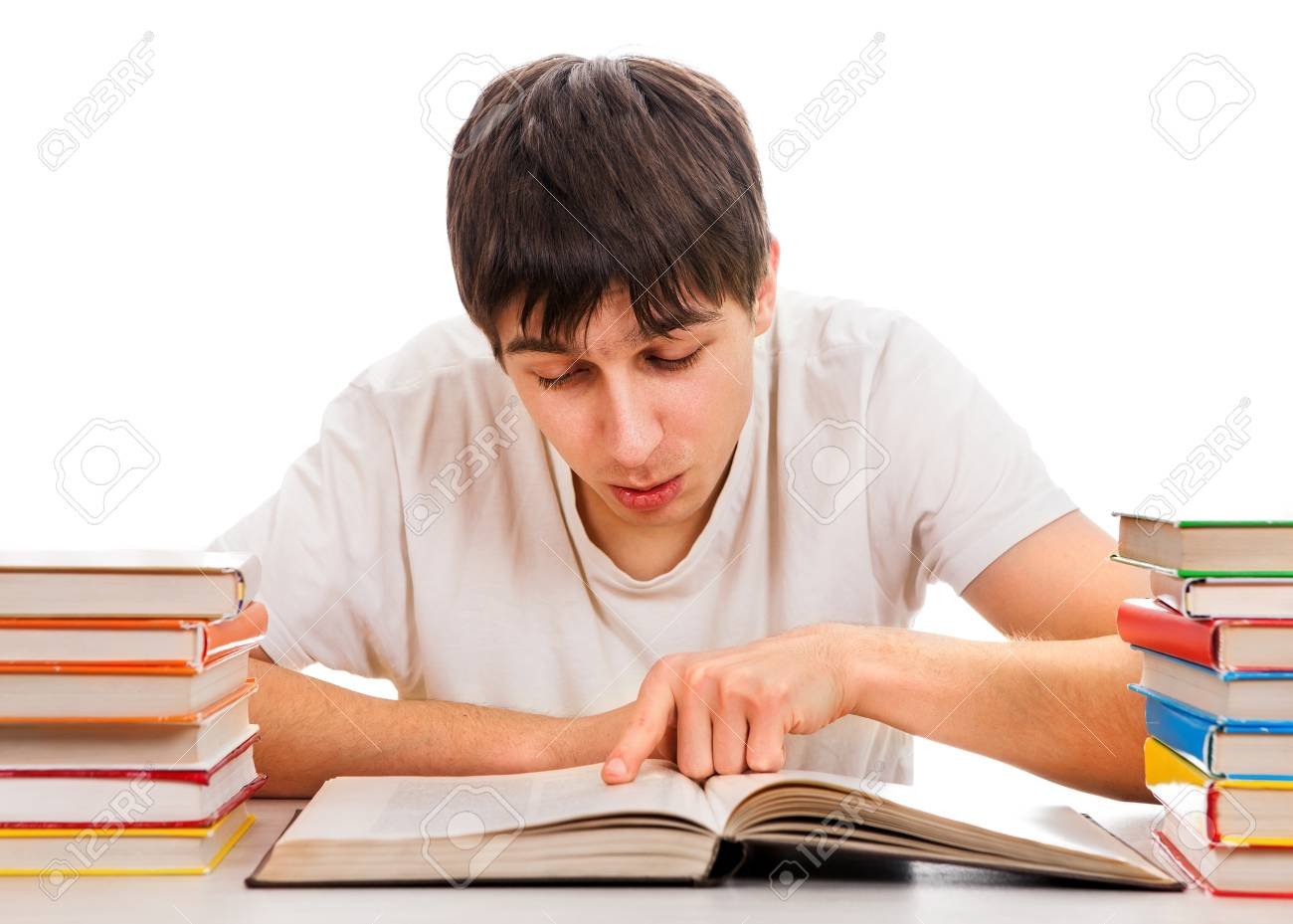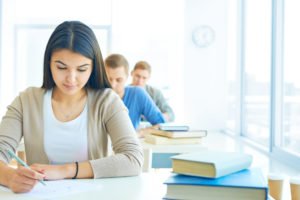Reading Passage 1
You should spend about 20 minutes on Questions 1–15, which are based on the reading passage below.
Sugar And Other Sweeteners
A. The sweetness of a substance results from physical contact between that substance and the many thousand taste buds of the tongue. The taste buds are clustered around several hundred small, fleshy protrusions called taste papilla which provide a large surface area for the taste buds and ensure maximum contact with a substance.
B. Although there are many millions of olfactory cells in the nose, taste is a more intense experience than smell; food technologists believe this is because of the strong pleasure relationship between the brain and food. And it is universally acknowledged that sweetness is the ultimate pleasurable taste sensation. For example, the French writer Marcel Proust is famous for using this idea in his work: eating a particular cake by chance one day brings back extremely vivid memories of childhood for the narrator of his epic In Search of Past Time. The words ‘sugar’, ‘honey’ and ‘sweetie’ are used by lovers as terms of endearment. Pregnant women can often ward off morning sickness by eating something sweet. In Tudor times*, to have teeth blackened by decay from eating too much sugar was seen as a desirable characteristic open only to the rich and aristocratic upper class. Even recently, with the harm sugar can do much more widely known, advertisers have managed to create demand for sweet-tasting cakes with the catch-phrase ‘naughty but nice’. Despite the attraction of all things sugary, however, no-one is sure what exactly makes a substance sweet.
C. Nature is abundant with sweet foodstuffs, the most common naturally occurring substance being fructose, which is found in almost all fruits and berries and is the main component of honey. Of course, once eaten, all foods provide one or more of the three basic food components – protein, fat and carbohydrate – which eventually break down (if and when required) to supply the body with the essential sugar glucose. Nature also supplies us with sucrose, a naturally occurring sugar within the sugar cane plant, which was discovered and exploited many centuries BC. Sucrose breaks down into glucose within the body. Nowadays, this white sugar is the food industry standard taste for sugar – the benchmark against which all other sweet tastes are measured. In the U.S.A. a number of foods, and especially soft drinks, are commonly sweetened with High Fructose Corn Syrup (HFCS), derived from corn starch by a process developed in the late 1960s. And man has further added to nature’s repertoire by developing a dozen or so artificial sweetening agents that are considered harmless, non-active chemicals with the additional property of sweetness (see Figure 1), to cater for his sweet tooth.
D. There is, indeed, an innate desire in humans (and some animals) to seek out and enjoy sweet-tasting foods. Since sweet substances provide energy and sustain life, they have always been highly prized. All food manufacturers capitalise on this craving for sweetness by flavouring most processed foods with carefully measured amounts of sugar in one form or another. The maximum level of sweetness that can be attained before the intrinsic taste of the original foodstuff is lost or unacceptably diminished is, in each case, determined by trial and error.
E. Furthermore, the most acceptable level of sweetness for every product -that which produces the optimum amount of pleasure for most people – is surprisingly constant, even across completely different cultures. This probably goes a long way towards explaining the almost universal appeal of Coca-Cola. (Although the type of sugar used in soft drinks differs from group to group, the intensity and, therefore, pleasure invoked by such drinks remains fixed within a fairly narrow range of agreement.)
F. Artificial sweeteners cannot match the luxurious smoothness and mouth-feel of white sugar. Even corn syrup has a slightly lingering after-taste. The reason why food technologists have not yet been able to create a perfect alternative to sucrose (presumably a non-kilojoule-producing substitute) is simple. There is no molecular structure yet known that predisposes towards sweetness. In fact, there is no way to know for certain if a substance will taste sweet or even taste of anything at all. Our currently available artificial sweeteners were all discovered to be sweet purely by accident.
* The Tudor time is the period between 1485 and 1603 in England and Wales and includes the Elizabethan period during the reign of Elizabeth I until 1603.
Commercial Sweeteners. Relative to sucrose – base 1.0.
| Sweetener | Strength | Taste | When Discovered | |
| Sorbitol | 0.6 | Slightly oily | 1872 | France |
| Sucrose | 1.0 | Standard | Pre-400 BC | India |
| High Fructose Corn Syrup | 1.0 | Slight after-taste | 1960s | USA |
| Cyclamate | 30 | slickly | 1937 | USA |
| Aspartame (NutraSweet) | 200 | Close to sucrose but softer, thinner | 1965 | USA |
| Saccha | 300 | Slightly bitter after-taste | 1878 | Germany |
Questions 1-5
Refer to Reading Passage “Sugar and Other Sweeteners”, and look at Questions 1 – 5 below.
Write your answers in boxes 1-5 on your Answer Sheet.
The first one has been done for you as an example.
Example: What do the letters HFCS stand for?
Answer: ……High Fructose Corn Syrup……
1 & 2. There are TWO naturally occurring sugar substances mentioned in the article other than sucrose. What are they?
3. What does the food industry consider to be the perfect sweetener?
4. & 5. Name the TWO most recent artificial sweeteners listed in the Figure
Questions 6-15
The following paragraphs summarise the reading passage. Choose the ONE most appropriate word from the box below the paragraphs to complete each blank space.
Write your answers in boxes 6- 15 on your answer sheet.
The first one has been done for you as an example.
NB. NO WORD CAN BE USED MORE THAN ONCE.
Sugar tastes sweet because of thousands of receptors on the tongue which connect the substance with the brain. The taste of sweetness is universally ……(Ex:) accepted…… as the most pleasurable known, although it is a ……(6)…… why a substance tastes sweet. ……(7)….. is the most naturally occurring sugar, sources of which include ……(8)…… and honey. Sucrose, which supplies ……(9)…… to the body, is extracted from the sugar-cane plant, and white sugar (pure sucrose) is used by food ……(10)…… to measure sweetness in other ……(11)…… . Approximately a dozen artificial sweeteners have been ……(12)……; one of the earliest was Sorbitol from France.
Manufacturers often add large amounts of sugar to foodstuffs but never more than the ……(13)…… required to produce the optimum pleasurable taste. Surprisingly, this amount is ……(14)…… for different people and in different cultures. No-one has yet discovered a way to predict whether a substance will taste sweet, and it was by chance alone that all the man-made ……(15)…… sweeteners were found to be sweet.
| Glucose | Sweetened | Different | Technology | Fructose |
| Mystery | Aritifically | Technologists | Maximum | Commonly |
| Chemical | Best | Substances | Discovered | Accepted |
| Fruit | Chemist | Similar |
Reading Passage 2
You spend about 20 minutes on Questions 16-28, which are based on Reading Passage 2 below.
Literate Women Make Better Mothers?
A. Children in developing countries are healthier and more likely to survive past the age of five when their mothers can read and write. Experts in public health accepted this idea decades ago, but until now no one has been able to show that a woman’s ability to read in itself improves her children’s chances of survival.
B. Most literate women learnt to read in primary school, and the fact that a woman has had an education may simply indicate her family’s wealth or that it values its children more highly. Now a long-term study carried out in Nicaragua has eliminated these factors by showing that teaching reading to poor adult women, who would otherwise have remained illiterate, has a direct effect on their children’s health and survival.
C. In 1979, the government of Nicaragua established a number of social programmes, including a National Literacy Crusade. By 1985, about 300,000 illiterate adults from all over the country, many of whom had never attended primary school, had learnt how to read, write and use numbers.
D. During this period, researchers from the Liverpool School of Tropical Medicine, the Central American Institute of Health in Nicaragua, the National Autonomous University of Nicaragua and the Costa Rican Institute of Health interviewed nearly 3,000 women, some of whom had learnt to read as children, some during the literacy crusade and some who had never learnt at all. The women were asked how many children they had given birth to and how many of them had died in infancy. The research teams also examined the surviving children to find out how well-nourished they were.
E. The investigators’ findings were striking. In the late 1970s, the infant mortality rate for the children of illiterate mothers was around 110 deaths per thousand live births. At this point in their lives, Those mothers who later went on to learn to read had a similar level of child mortality(105/1000).For women educated in primary school, however, the infant mortality rate was significantly lower, at 80 per thousand.
In 1985, after the National Literacy Crusade had ended, the infant mortality figures for those who remained illiterate and for those educated in primary school remained more or less unchanged. For those women who learnt to read through the campaign, the infant mortality rate was 84 per thousand, an impressive 21 points lower than for those women who were still illiterate. The children of the newly-literate mothers were also better nourished than those of women who could not read.
F. Why are the children of literate mothers better off? According to Peter Sandiford of the Liverpool School of Tropical Medicine, no one knows for certain. Child health was not on the curriculum during the women’s lessons, so he and his colleagues are looking at other factors. They are working with the same group of 3,000 women, to try to find out whether reading mothers make better use of hospitals and clinics, opt for smaller families, exert more control at home, learn modem childcare techniques more quickly, or whether they merely have more respect for themselves and their children.
G. The Nicaraguan study may have important implications for governments and aid agencies that need to know where to direct their resources. Sandiford says that there is increasing evidence that female education, at any age, is ‘an important health intervention in its own right’ .The results of the study lend support to the World Bank’s recommendation that education budgets in developing countries should be increased, not just to help their economies, but also to improve child health. ‘We’ve known for a long time that maternal education is important,’ says John Cleland of the London School of Hygiene and Tropical Medicine. ‘But we thought that even if we started educating girls today, we’d have to wait a generation for the pay-off. The Nicaraguan study suggests we may be able to bypass that.’
H. Cleland warns that the Nicaraguan crusade was special in many ways, and similar campaigns elsewhere might not work as well. It is notoriously difficult to teach adults skills that do not have an immediate impact on their everyday lives, and many literacy campaigns in other countries have been much less successful. ‘The crusade was part of a larger effort to bring a better life to the people,’ says Cleland. Replicating these conditions in other countries will be a major challenge for development workers.
Questions 16-20
Complete the summary using the list of words, A-J, below.
Write the correct letters, A-J, in boxes 16-20 on your answer sheet.
NB You may use any letter more than once.
The Nicaraguan National Literacy Crusade aimed to teach large numbers of illiterate 16 ……………… to read and write. Public health experts have known for many years that there is a connection between child health and 17……………… However, it has not previously been known whether these two factors were directly linked or not. This question has been investigated by 18………………. in Nicaragua. As a result, factors such as 19 …………………. and attitudes to children have been eliminated, audit has been shown that 20……………. can in itself improve infant health and survival.
A child literacy
B men and women
C an international research team
D medical care
E mortality
F maternal literacy
G adults and children
H paternal literacy
I a National Literacy Crusade
J family wealth
Questions 21-26
Do the following statements agree with the claims of the writer in Reading Passage 2?
In boxes 21-26 on your answer sheet, write:
YES if the statement agrees with the claims of the writer
NO if the statement contradicts the claims of the writer
NOT GIVEN if it is impossible to say what the writer thinks about this
21. About a thousand or the women interviewed by the researchers had learnt to read they were children.
22. Before the National Literacy Crusade, illiterate women had approximately the same levels of infant mortality as those who had learnt to read in primary school.
23. Before and after the National Literacy Crusade, the child mortality rate for the illiterate women stayed at about 110 deaths for each thousand live births.
24. The women who had learnt to read through the National Literacy Crusade showed the greatest change in infant mortality levels.
25. The women who had learnt to read through the National Literacy Crusade had the lowest rates of child mortality.
26. After the National Literacy Crusade, the children of the women who remained illiterate were found to be severely malnourished.
Questions 27 and 28
Choose TWO letters, A-E
Write the correct letters in boxes 25 and 26 on your answer sheet
Which TWO important implications drawn from the Nicaraguan study are mentioned by the writer of the passage?
A. It is better to educate mature women than young girls
B. Similar campaigns in other countries would be equally successful.
C. The effects of maternal literacy programmes can be seen very quickly
D. Improving child health can quickly affect a country’s economy.
E. Money spent on female education will improve child health.
Reading Passage 3
You should spend about 20 minutes on Questions 29-40, which are based on Reading Passage 3 below.
Preface to ‘How The Other Half Thinks: Adventures In Mathematical Reasoning’
A. Occasionally, in some difficult musical compositions, there are beautiful, but easy parts – parts so simple a beginner could play them. So it is with mathematics as well. There are some discoveries in advanced mathematics that do not depend on specialized knowledge, not even on algebra, geometry, or trigonometry. Instead, they may involve, at most, a little arithmetic, such as ‘the sum of two odd numbers is even’, and common sense. Each of the eight chapters in this book illustrates this phenomenon. Anyone can understand every step in the reasoning. The thinking in each chapter uses at most only elementary arithmetic, and sometimes not even that. Thus all readers will have the chance to participate in a mathematical experience, to appreciate the beauty of mathematics, and to become familiar with its logical, yet intuitive, style of thinking.
B. One of my purposes in writing this book is to give readers who haven’t had the opportunity to see and enjoy real mathematics the chance to appreciate the mathematical way of thinking. I want to reveal not only some of the fascinating discoveries, but, more importantly, the reasoning behind them. In that respect, this book differs from most books on mathematics written for the general public. Some present the lives of colorful mathematicians. Others describe important applications of mathematics. Yet others go into mathematical procedures, but assume that the reader is adept in using algebra.
C. I hope this book will help bridge that notorious gap that separates the two cultures: the humanities and the sciences, or should I say the right brain (intuitive) and the left brain (analytical, numerical). As the chapters will illustrate, mathematics is not restricted to the analytical and numerical; intuition plays a significant role. The alleged gap can be narrowed or completely overcome by anyone, in part because each of us is far from using the full capacity of either side of the brain. To illustrate our human potential, I cite a structural engineer who is an artist, an electrical engineer who is an opera singer, an opera singer who published mathematical research, and a mathematician who publishes short stories.
D. Other scientists have written books to explain their fields to non-scientists, but have necessarily had to omit the mathematics, although it provides the foundation of their theories. The reader must remain a tantalized spectator rather than an involved participant, since the appropriate language for describing the details in much of science is mathematics, whether the subject is expanding universe, subatomic particles, or chromosomes. Though the broad.outline of a scientific theory can be sketched intuitively, when a part of the physical universe is finally understood, its description often looks like a page in a mathematics text.
E. Still, the non-mathematical reader can go far in understanding mathematical reasoning. This book presents the details that illustrate the mathematical style of thinking, which involves sustained, step-by-step analysis, experiments, and insights. You will turn these pages much more slowly than when reading a novel or a newspaper. It may help to have a pencil and paper ready to check claims and carry out experiments.
F. As I wrote, I kept in mind two types of readers: those who enjoyed mathematics until they were turned off by an unpleasant episode, usually around fifth grade, and mathematics aficionados, who will find much that is new throughout the book. This book also serves readers who simply want to sharpen their analytical skills. Many careers, such as law and medicine, require extended, precise analysis. Each chapter offers practice in following a sustained and closely argued line of thought. That mathematics can develop this skill is shown by these two testimonials.
G. A physician wrote, The discipline of analytical thought processes [in mathematics] prepared me extremely well for medical school. In medicine one is faced with a problem which must be thoroughly analyzed before a solution can be found. The process is similar to doing mathematics.’ A lawyer made the same point, “Although I had no background in law – not even one political science course — I did well at one of the best law schools. I attribute much of my success there to having learned, through the study of mathematics, and, in particular, theorems, how to analyze complicated principles. Lawyers who have studied mathematics can master the legal principles in a way that most others cannot.’
Questions 29-34
Reading Passage 3 has seven sections, A-G. Which section contains the following information?
Write the correct letter, A— G, in boxes 29 — 34 on your answer sheet.
NB. You may use any letter more than once.
29. personal examples of being helped by mathematics
30. examples of people who each had abilities that seemed incompatible
31. mention of different focuses of books about mathematics
32. a contrast between reading this book and reading other kinds of publication
33. a claim that the whole of the book is accessible to everybody
34. a reference to different categories of intended readers of this book
Questions 35-40
Complete the sentences below. Choose ONE WORD ONLY from the passage for each answer.
Write your answers in boxes 35- 40 on your answer sheet.
35. Some areas of both music and mathematics are suitable for someone who is a ………………..
36. It is sometimes possible to understand advanced mathematics using no more than a limited knowledge of ………………..
37. The writer intends to show that mathematics requires ……………….. thinking, as well as analytical skills.
38. Some books written by ……………….. have had to leave out the mathematics that is central to their theories.
39. The writer advises non-mathematical readers to perform ……………….. while reading
40. A lawyer found that studying ……………….. helped even more than other areas of mathematics in the study of law.
Answers
[restrict paid=true]
Reading Passage 1
1. & 2. fructose, glucose [ in either order]
3. white sugar/ sucrose.
4. & 5. Aspartame (NutraSweet), Cyclamate.
6. mystery
7. fructose
8. fruit
9. glucose
10. technologists
11. substances
12. discovered
13. maximum
14. similar
15. chemical
Reading Passage 2
16. B
17. F
18. C
19. J
20. F
21. NOT GIVEN
22. NO
23. YES
24. YES
25. NO
26. NOT GIVEN
27. C
28. E
Reading Passage 3
29. G
30. C
31. B
32. E
33. A
34. F
35. beginner
36. arithmetic
37. intuitive
38. scientists
39. experiments
40. theorems
[/restrict]














